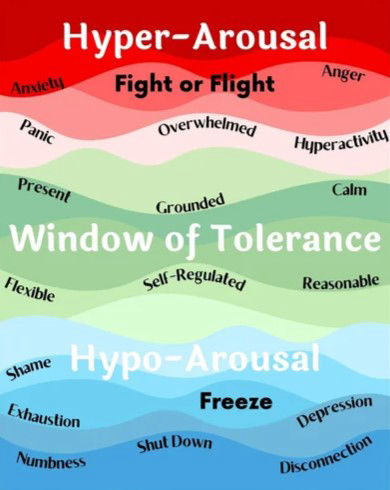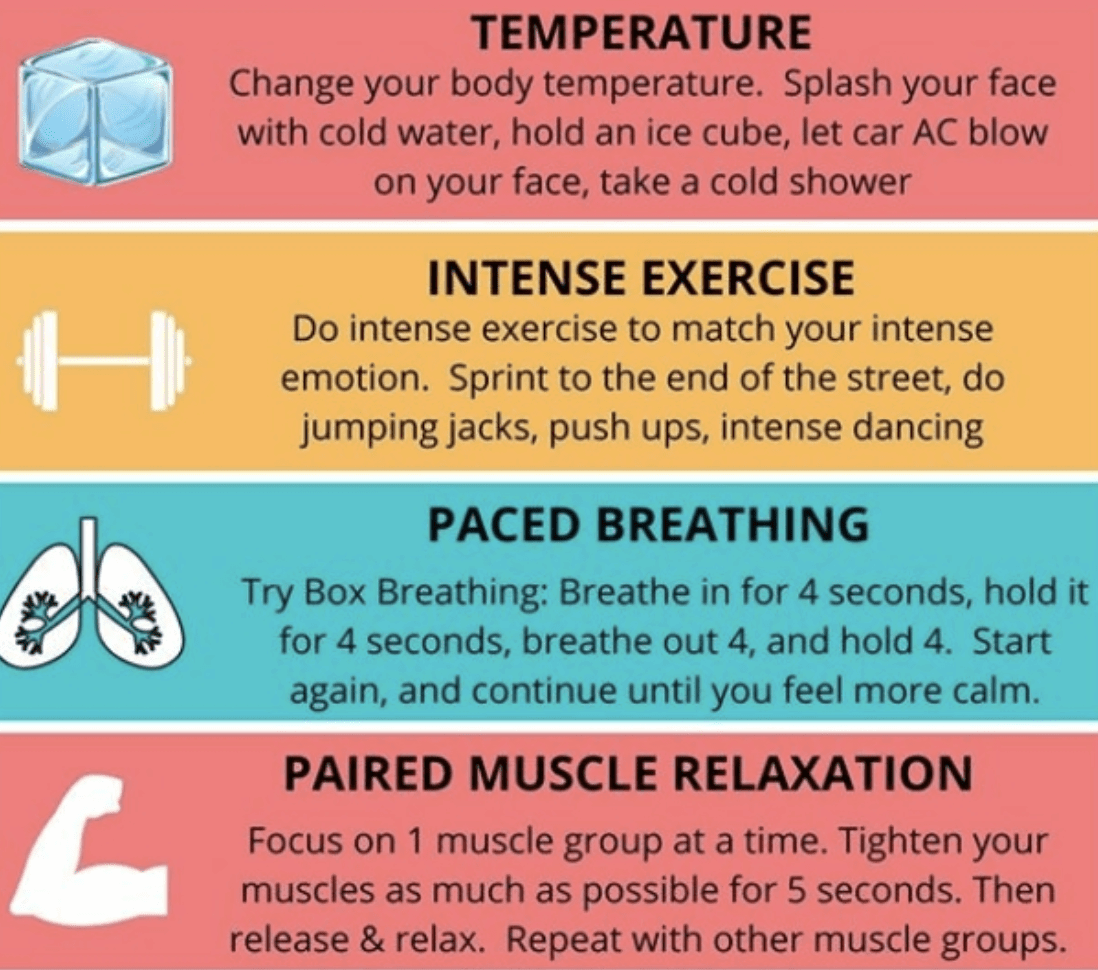Distress Tolerance Skills
Dealing with overwhelming emotions



There is an optimal state of emotional arousal for everyday life which has been called the window of tolerance. This is a state of being grounded, present, calm, and reasonable. However, we can sometimes be triggered into a state of 'Fight or Flight' even when there is no immediate threat. In such a state we may be said to be overwhelmed, and act in ways which, can make our situations worse. This state of being (when there is no real threat) is the kind of emotional state we discuss here.
Of course it is better to recognise when one is about to be overwhelmed and take measures to stay within the window of tolerance at that time. This isn't always possible, and as any parent of a toddler knows, once they 'flip their lid' it is exceptionally hard to get them back into equilibrium.
There are some things one can learn to do, if you get close to or beyond that point of no return. In dialectical behaviour therapy (DBT) there are a set of skills which are taught and practiced called the TIPP skills (more later). However, you need to first notice that you have (gone past that point). This often takes some practice and coaching in mindfulness. It is also helpful if you have prepared and practiced these skills when you are operating within the window of tolerance.

You may have heard or used the expression, "chill out", "cool down", or "take a shower" to take the heat out of strong emotions. There is more than a grain of truth behind these sayings. All mammals have something called the dive reflex which is invoked when a mammal holds their breath when their face (and in particular the trigeminal nerve endings which end just below the eyes) are exposed to temperatures below around four degrees. A seal, for example, has a heart rate of over 100 on land, but once in the sea it drops to below 10 beats per minute. Humans too, can rapidly dampen down their autonomic system rapidly (within 30 seconds) of holding one's breath in cold water.
You can practice invoking the dive reflex at home.
It is a very good idea to practice this exercise and be equipped to try it when you most need it. It is useful to take one's pulse before immersion and then after (just to prove that it works). You may have a device like a pulse oximeter, watch or fit-bit which can monitor your pulse for you. It is important to make sure the face (below the eyes) is covered or immersed in water. Then hold your breath.
Some ice cubes in a bowl of water can suffice, but so can an icepack, a wet towel (dipped in icey water) or even a bag of frozen vegetables from the freezer. The water or object should be below 4 degrees but not so cold it can burn.
The cold can at first be quite a shock. Attempt to hold your breath for thirty seconds or more. If you can't initially take several deep breaks (or try the breathing exercise below) and try again.
The simplest form of paced breathing is to breath in four four seconds, hold for four seconds and exhale for four seconds. There are even apps for your smart phone to assist in coaching in paced breathing. It will generally take a few minutes for paced breathing alone to assist you to regain equilibrium and move back into the window of tolerance. Whilst you are in the window of tolerance why not try a somewhat more difficult but more powerful breathing exercise called the 4-7-8 breathing technique i.e. Breathing in for 4 seconds, holding for 7 seconds and exhaling for 8 seconds.
A paired and progressive muscle relaxation exercise involves mindful breathing and working through your muscle groups and tensing and relaxing them.
.
There are many guided progressive muscle relaxation exercises on the internet. Do explore the offerings and find a guide that you find helpful. You do not need a guide, when familiar with the principles. Simply start breathing and mindfully tense muscle groups, holding for at least five seconds and then releasing those groups for about the same length of time. Try and synchronize the tensing of muscles with the holding of the breath and relax muscles on exhalation.